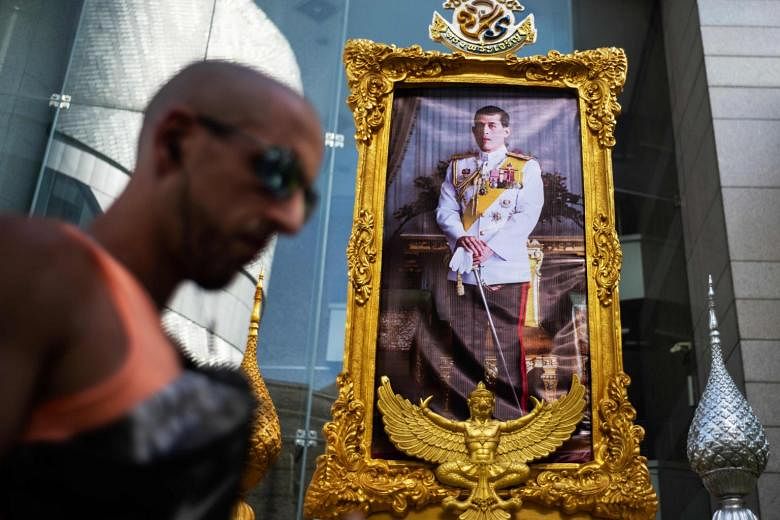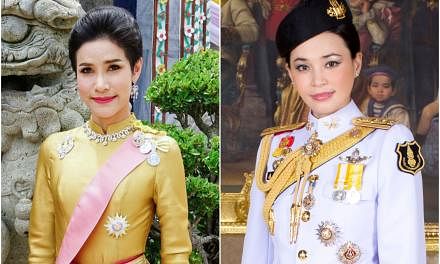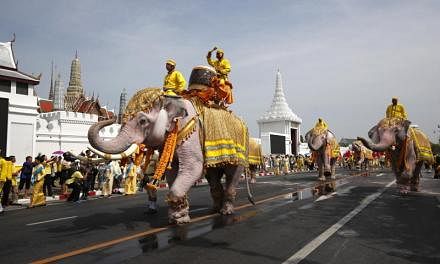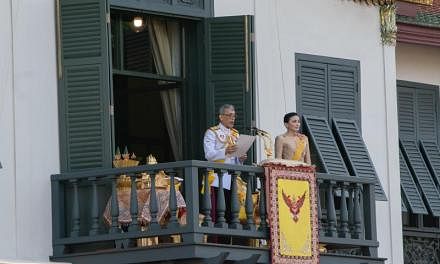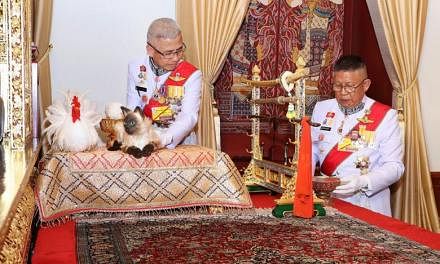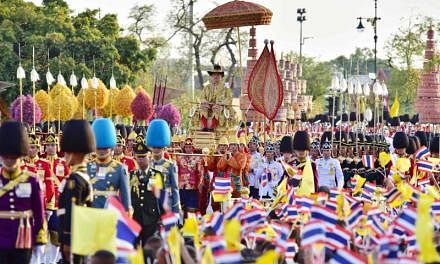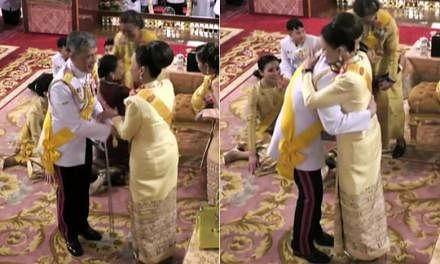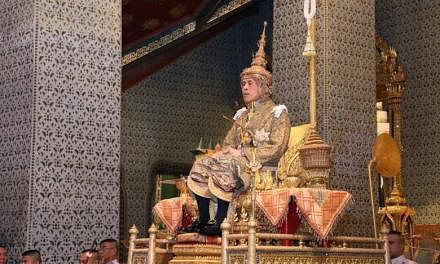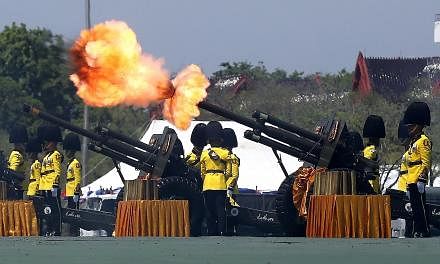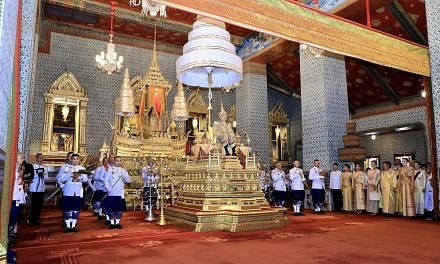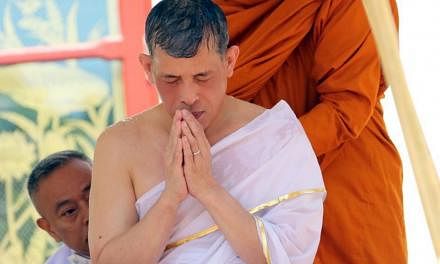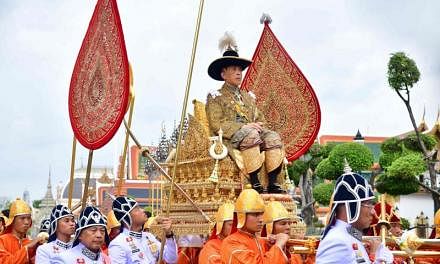BANGKOK (REUTERS) - During Thailand's main coronation event for King Maha Vajiralongkorn on Saturday (May 4), the monarch will be presented with five articles of royal regalia, which are treated as symbols of kingship, marking the legitimacy of his reign.
Historical evidence suggests the tradition dates back to the Ayutthaya period (1350-1767) of Siam, as Thailand was known.
The items were first made for the coronation of King Buddha Yod Fa Chulalok, or Rama I, and heavily infused with Hindu-Brahman beliefs.
Here are the five royal instruments that will play a vital role in making King Vajiralongkorn, or Rama X, the 10th divine monarch of Thailand's Chakri dynasty.
1. THE GREAT CROWN OF VICTORY
The crown is the most important article among all the royal regalia. Adorned with diamonds set in gold enamel, the crown is 66cm high and weighs 7.3kg. At the tip of the cone-shaped crown is a large diamond from Kolkata called "Phra Maha Wichian Mani".
During coronation ceremonies of the early reigns, kings Rama I to III would only place the crown next to them upon receiving it. But later, when Siam had more contact with European countries, King Rama IV started the practice of placing the crown upon his head, to be more in line with the Western idea of kingship.
The high-reaching crown symbolises the summit of Mount Meru, the Hindu god Indra's heavenly abode, and its weight represents the monarch's royal burden.
2. THE SWORD OF VICTORY
The sword is believed to be an ancient sword of the Khmer Empire, which was lost at the bottom of a lake in Siem Reap until it was caught in a fisherman's net and later presented to King Rama I.
The king then ordered the sword's hilt and sheath to be ornamented in gold enamel and precious gems, becoming the sword "Phra Saeng Khan Chai Sri" as we now know it.
The length of the sword is 89.8cm, including the 64.5cm blade. It weighs 1.9kg when enclosed with the sheath.
It represents the king's ability to protect his nation.
3. THE ROYAL SCEPTRE
The 118cm staff, called "Than Phra Kon", is made of Javanese Cassia wood enamelled in gold. The finial is shaped like a trident gilded with gold and its iron hilt is also inlaid with gold.
The staff symbolises the righteousness of the king.
4. THE ROYAL FAN AND FLY WHISK
The "Walawichani" was originally only a fan made of a palm leaf, with gold-trimmed rim and gold-enamelled rod.
However, King Rama IV said "Walawichani", in the Pali language, refers more to a whisk-like item, made from the hair of a yak, an animal found in the Himalayas. The king, therefore, ordered the whisk to be made and included it in the royal regalia along with the original palm-leaf fan.
The fan and whisk signify the king's duty to chase away his people's troubles.
5. THE ROYAL SLIPPERS
The curve-tipped slippers, called "Chalong Phrabat Choeng Ngon", are made of colourful enamelled gold and inlaid with diamonds.
During the coronation ceremony, the chief Brahmin, who presents the king with the royal regalia, will put the slippers on the king's feet.
The royal slippers represent the ground of Mount Meru, the abode of the god Indra.
